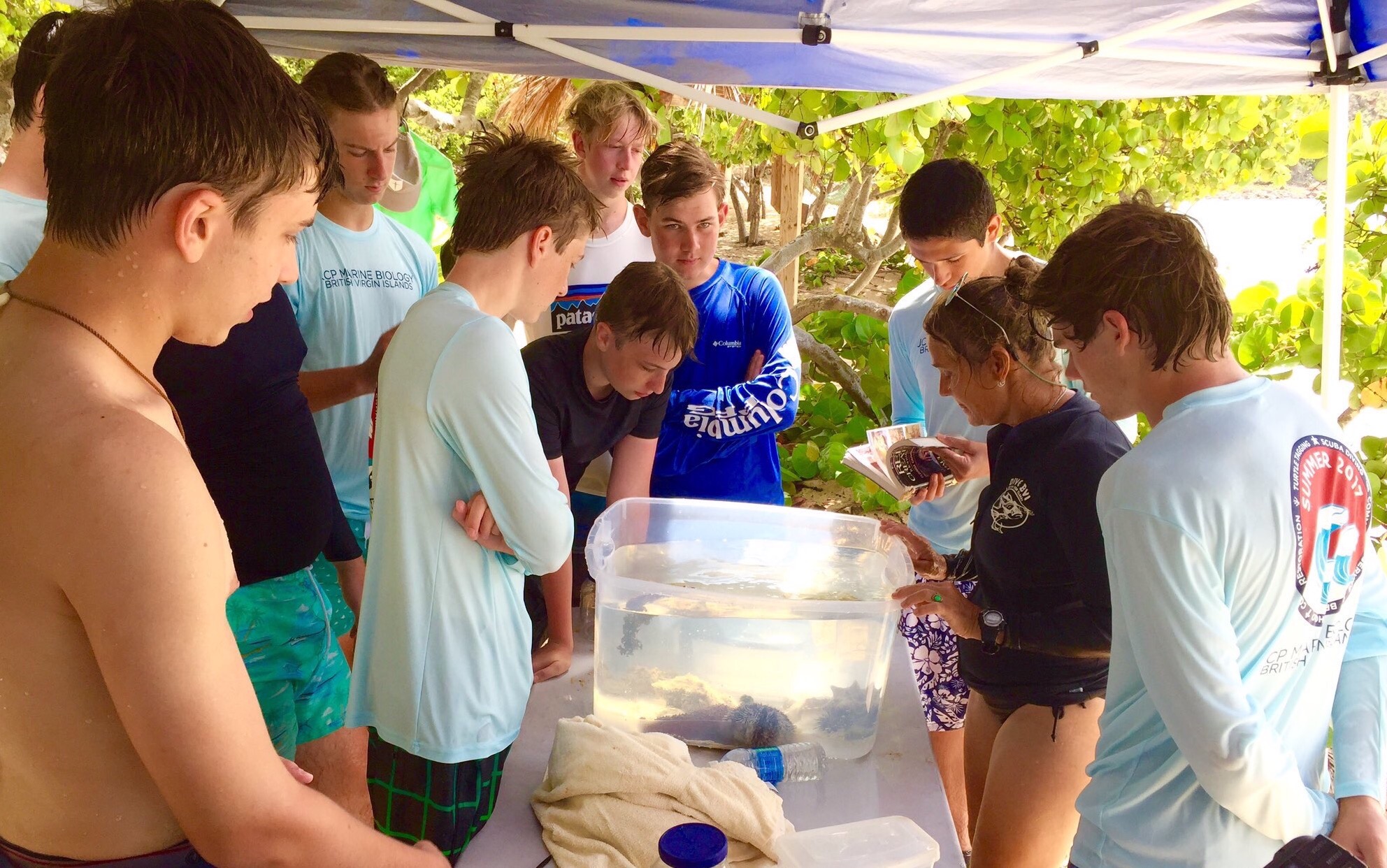A cool breeze entered our room as we began to prepare breakfast for our classmates. It had rained overnight, so it was a cool morning as we gathered to eat for a very rigorous day of turtle tagging. Before we could begin our turtle tagging experience, a representative of ARK, Association of Reef Keepers, gave us an informative presentation on the turtles of the Caribbean and their history. We learned about what kinds of turtles we were going to see, such as Hawksbills or Green Turtles, and we were shown where they nested in the BVI. The representative explained the efforts put forth to help conserve and research the Caribbean sea turtles, and she briefed us on how our tagging would help the government gain more data. After taking a taxi ride to the harbor, we were split up by boat teams in order to separate who would capture turtles and who would recover invertebrates and study them in Savannah Bay. My team and the Sea Dragon crew went first in the morning to tag turtles. After traveling over to Little Dix Bay, we were set out to find some turtles and safely return them to the boat. My group mate and I chased down two juvenile green sea turtles for almost 7 minutes before sadly losing them. The rest of our teammates were also unsuccessful in capturing a sea turtle, so our captain took us to Mount Trunk in order to search for more. This time, instead of snorkeling to chase them, our boat Power Towed us around the bay for spotting. To do this, we would hold onto ropes which were to be tugged around behind the boat. We again turned up unsuccessful after chasing a Hawksbill until it reached water too deep to dive down and grab it.
Although we all returned to the harbor empty-handed and a little disappointed, we were greeted with a fantastic meal at the Bath and Turtle. From there we switched off with the Sea Monkey crew and traveled to Savannah Bay. Our instructors briefed us on what invertebrates to look for and attempt to capture in a mayonnaise jar. Our list of invertebrates seem included: squid, clams, sea slugs, bubble algae, sea cucumber, and hermit crabs. Our group chased after plenty of squid, but our teamwork just didn’t keep up with their speed and camouflage. They hid from us in the sand and algae after 10 mins of chasing, but we still found many sea pearls and got to identify the different types of invertebrates in the reef. I was most interested in the sea pearls, which are one singular cell of algae. They float around the sea floor taking nutrients from the water around it and multiplying. I also learned about isopods, which latch onto fish and eat scraps of food which pass through the gills. All in all, the day gave me plenty of opportunities to learn about new creatures, and I’m extremely excited to dive at the ship wrecks tomorrow morning. 




